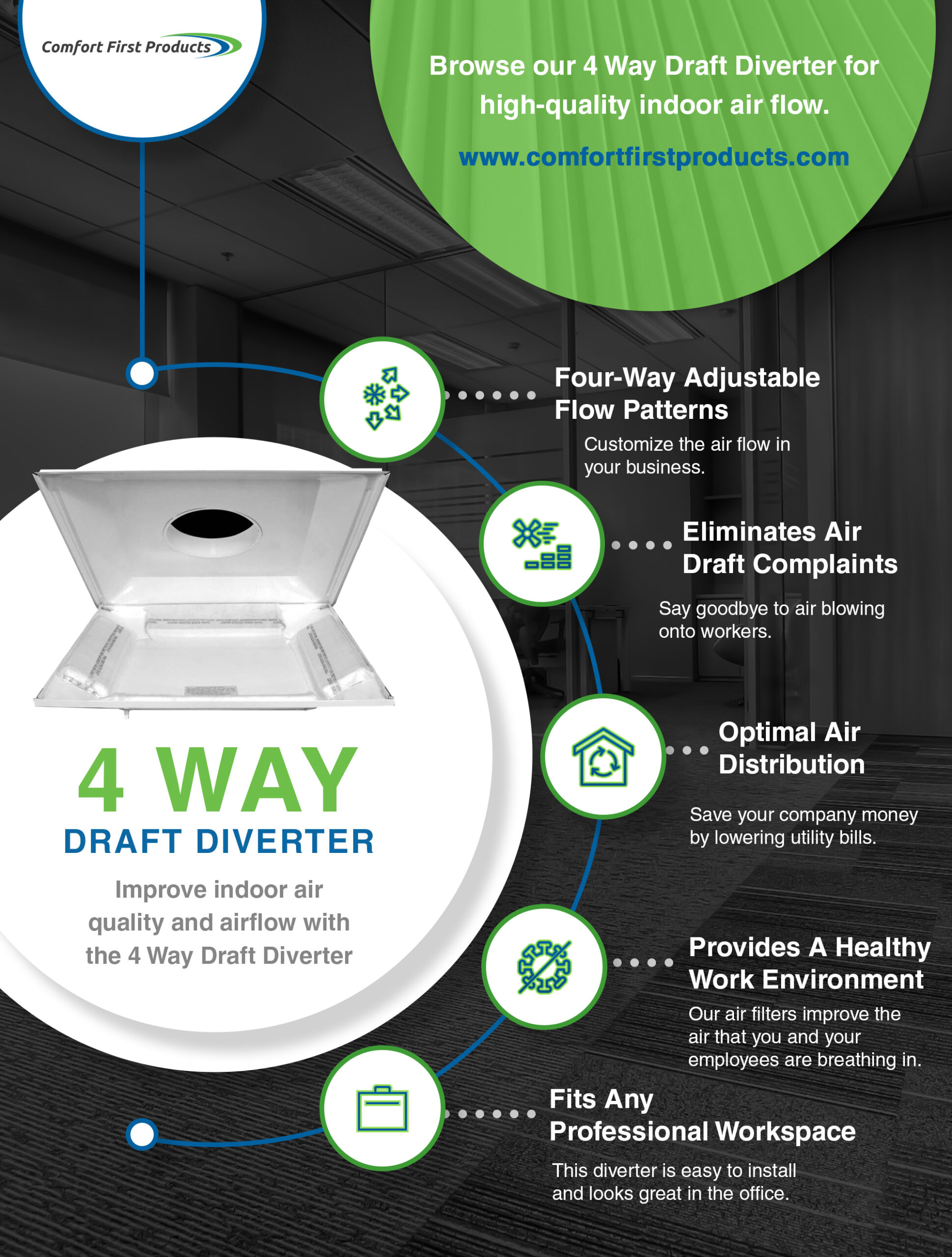
Indoor Air Quality

The US is home to 60 billion square feet of office space. As these buildings continue to age, the need to do something to improve the indoor air quality will become paramount. The EPA explains that Indoor Air Quality (IAQ) “refers to the air quality within and around buildings and structures, especially as it relates to the health and comfort of building occupants.” We can reduce your risk of indoor health concerns by understanding and controlling these common indoor pollutants.
There are many reasons that you may need to filter the air that flows through your building. Both draft elimination and filtration can provide your office with many health benefits which can produce better work efforts exhibited all around. As research has shown, there are people who suffer from allergies due to ductwork contaminants in the workplace, as well as those who get sick from air drafts coming from the commercial air conditioning vents.
Hospitals are very concerned about indoor air quality - check out our page here to learn why!

The Indoor Environment Group at Berkeley Labs tells us that “The term ‘indoor air quality (IAQ),’ interpreted broadly, refers to the environmental characteristics inside buildings that may affect human health, comfort, or work performance. IAQ characteristics include the concentrations of (amounts of) pollutants in indoor air, as well as air temperature and humidity.- The main factors affecting indoor thermal comfort are indoor air temperatures, the temperatures of exterior walls and windows, humidity, and the amount of indoor air motion.”
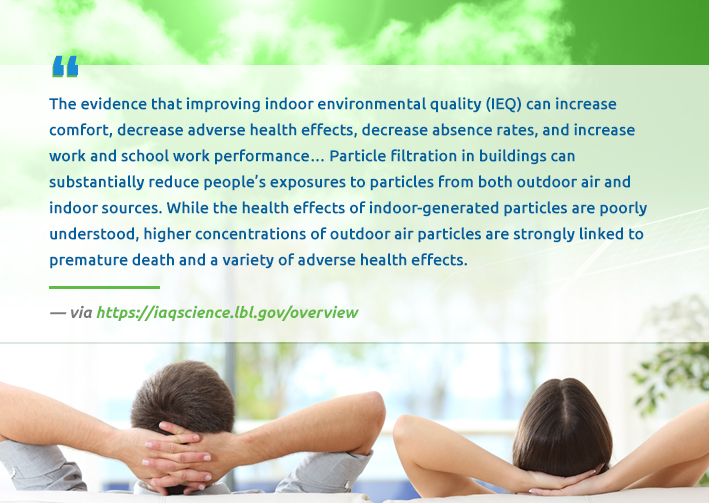
“Particle filtration technologies are well established and widely available. Currently, most building HVAC systems include filters with a relatively low-efficiency rating. For example, U.S. commercial buildings often use filters with a Minimum Efficiency Reporting Value (MERV) of 7, with a low efficiency in removing the small particles most important to health. The filters used in the HVAC systems of houses often have an even lower efficiency. The incremental costs of using higher efficiency filters, e.g., those with a MERV 11 rating, are modest — less than a U.S. dollar per person per month [11, 62] and the predicted health benefits are substantial. Consequently, routine use of higher efficiency filters in HVAC systems represents a good building practice.”
Clean Your Air
As people become more educated about “sick building syndrome,” they will be demanding that management does something to improve the quality of the air they breathe. The EPA states that indoor air quality is, on average, seven to ten times more polluted than outdoor air, even in metropolitan areas. Harmful airborne particles are linked to health problems such as asthma, fatigue, allergies, respiratory ailments, headaches, nausea, and more.
Until now, solutions were few and cleaning or replacing ductwork is often too costly. Plus, cleaning the ducts often exacerbates the problem by loosening old duct insulation loaded with contaminants.
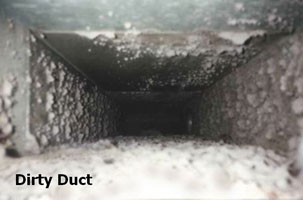

Dust Mite, Insect Feces, and Hair
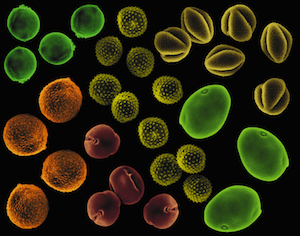
Weed and Tree Pollen
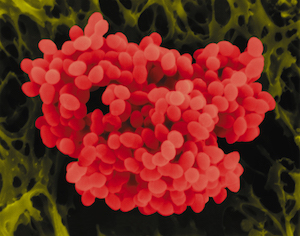
Airborne Streptococcus Bacteria

Comfort First Products strives to provide our customers with the solution they need to keep their office a happy, thriving, healthy, comfortable indoor business by improving indoor air quality and controlling the indoor air motion.
There are many reasons that you may need to filter the air that circulates throughout your commercial building. Both draft elimination and filtration can provide your office with many health benefits which can produce company-wide improvements in work efforts.
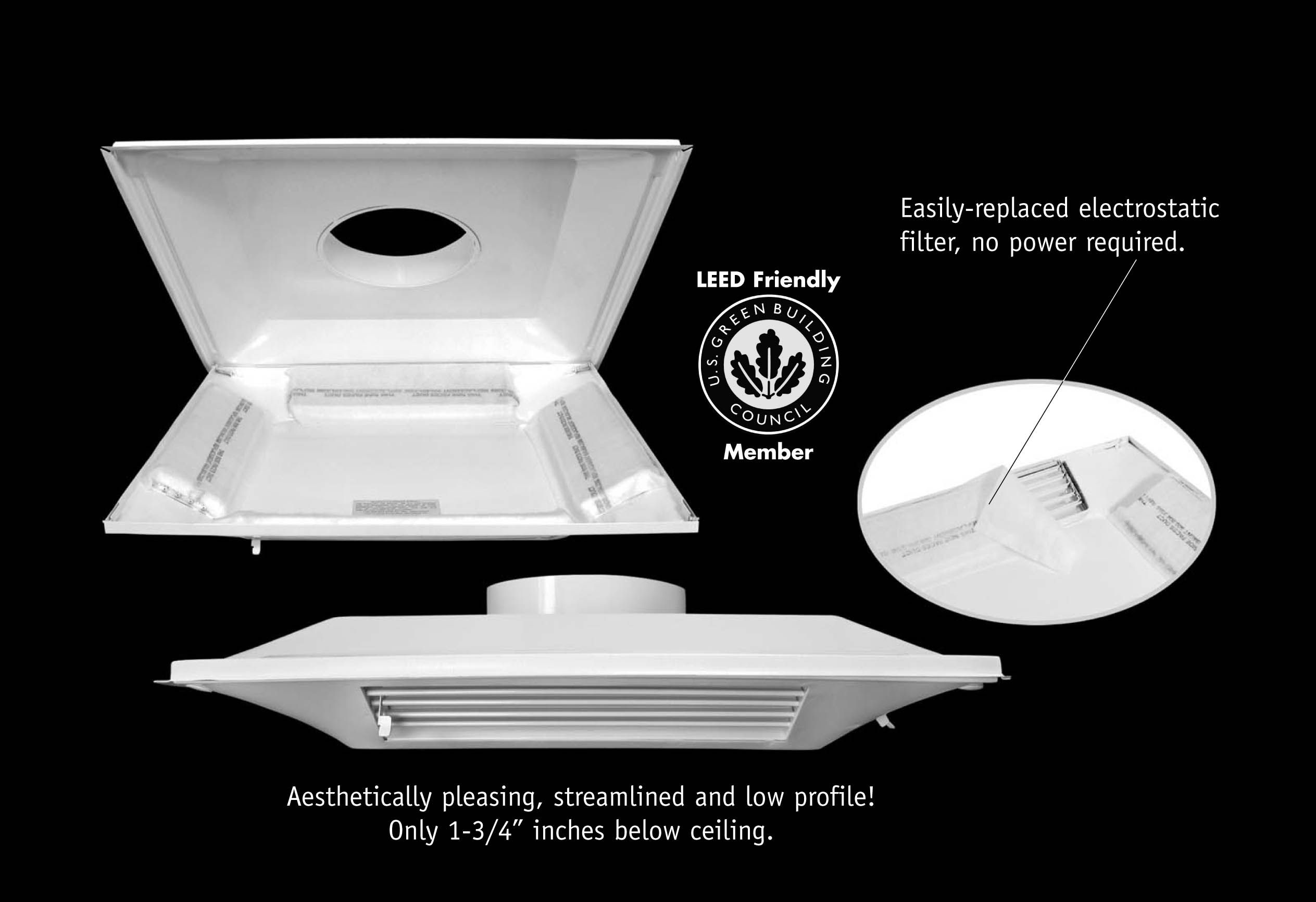
Comfort First Filtered Diffuser - 4 Way Draft Diverter
The Comfort First Filtered Diffuser features four independently adjustable louvers, providing complete individual air control. No more dumping of freezing air, regardless of the Air Volume (Cubic Feet Per Minute). It’s also guaranteed to deliver the best air distribution available while providing an ambient air temperature comfortable for EVERYONE. Additionally, it helps make facilities office airflow specialists.
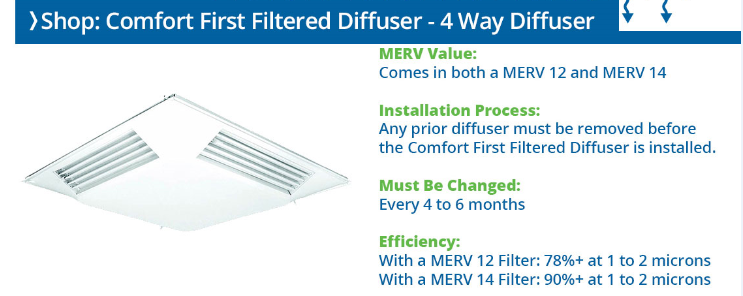
Comfort First Filtered Diffuser - 4 Way Draft Diverter
The Comfort First Filtered Diffuser features four independently adjustable louvers, providing complete individual air control. No more dumping of freezing air, regardless of the Air Volume (Cubic Feet Per Minute). It’s also guaranteed to deliver the best air distribution available while providing an ambient air temperature comfortable for EVERYONE. Additionally, it helps make facilities office airflow specialists.
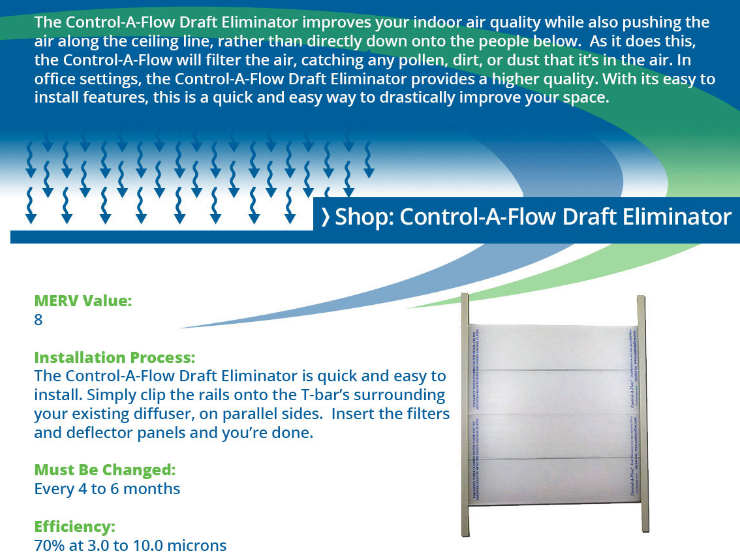
"Someday all buildings will be required to have a filtering supply diffuser to clean the air as it enters the room. It’s the only sensible solution to ductwork pollution."
-David T. Northcutt, National Sales Manager, International Diversified Marketing, Inc.

